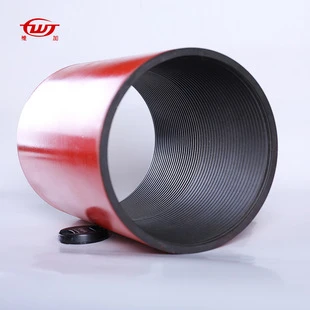- Afrikaans
- Albanian
- Amharic
- Arabic
- Armenian
- Azerbaijani
- Basque
- Belarusian
- Bengali
- Bosnian
- Bulgarian
- Catalan
- Cebuano
- Corsican
- Croatian
- Czech
- Danish
- Dutch
- English
- Esperanto
- Estonian
- Finnish
- French
- Frisian
- Galician
- Georgian
- German
- Greek
- Gujarati
- Haitian Creole
- hausa
- hawaiian
- Hebrew
- Hindi
- Miao
- Hungarian
- Icelandic
- igbo
- Indonesian
- irish
- Italian
- Japanese
- Javanese
- Kannada
- kazakh
- Khmer
- Rwandese
- Korean
- Kurdish
- Kyrgyz
- Lao
- Latin
- Latvian
- Lithuanian
- Luxembourgish
- Macedonian
- Malgashi
- Malay
- Malayalam
- Maltese
- Maori
- Marathi
- Mongolian
- Myanmar
- Nepali
- Norwegian
- Norwegian
- Occitan
- Pashto
- Persian
- Polish
- Portuguese
- Punjabi
- Romanian
- Russian
- Samoan
- Scottish Gaelic
- Serbian
- Sesotho
- Shona
- Sindhi
- Sinhala
- Slovak
- Slovenian
- Somali
- Spanish
- Sundanese
- Swahili
- Swedish
- Tagalog
- Tajik
- Tamil
- Tatar
- Telugu
- Thai
- Turkish
- Turkmen
- Ukrainian
- Urdu
- Uighur
- Uzbek
- Vietnamese
- Welsh
- Bantu
- Yiddish
- Yoruba
- Zulu
casing collar
Understanding Casing and Collar in Drilling Operations
In the realm of oil and gas drilling, the terms casing and collar are fundamental components related to the integrity and efficiency of drilling operations. These elements play a crucial role in maintaining the structural integrity of boreholes and ensuring the safety of drilling activities. This article delves into the definitions, importance, and applications of casing and collar in drilling operations.
What is Casing?
Casing refers to a series of pipes that are placed in the drilled hole (well) to stabilize its walls and prevent collapse. The casing is typically made of high-strength steel and is designed to withstand the pressures encountered during drilling and production. Its primary purpose is to protect the wellbore from environmental factors, such as water influx and potential contamination from surface environments.
The installation of casing occurs following the drilling of a section of the well. After reaching the desired depth, a casing string is lowered into the hole, and cement is pumped around the outside of the casing to secure it in place. This cementing process bonds the casing to the geological formation, creating a barrier that helps to isolate various pressure zones and protect underground reservoirs.
Different types of casing are used depending on the specific requirements of the drilling project. For instance, surface casing is typically installed first to protect the shallow groundwater and provide a stable base for further drilling. Intermediate and production casings follow, designed to withstand the higher pressures encountered at greater depths.
What is a Collar?
casing collar

A collar is a specialized component used in conjunction with casing. It essentially serves as a coupling or junction piece that connects two or more casing strings. Collars are also utilized for locating specific tools or equipment, such as packers or safety valves, within the casing.
Collars can be classified into various types based on their function and design. For instance, a casing collar is a thicker section of the casing that is typically placed at critical depths within the well. It helps in marking the depth of the casing string and provides structural support. In some cases, collars are equipped with ports or openings that allow for the movement of fluids or gas during the drilling process.
One of the significant advantages of using collars in casing operations is the ability to facilitate the deployment of various downhole tools. In drilling operations, it is crucial to maintain a precise and efficient workflow, as delays can result in increased operational costs. The incorporation of collars allows operators to streamline the process, ensuring that tools can be deployed or retrieved with minimal disruption.
Importance of Casing and Collar in Drilling
The significance of casing and collar in drilling operations cannot be overstated. First and foremost, these components play a vital role in ensuring the safety and stability of the well. Casing protects against blowouts and uncontrolled fluid flows, while collars provide the necessary support and tools to manage these risks.
Moreover, proper casing and collar design can enhance the overall efficiency of drilling projects. By reducing the likelihood of equipment failures or wellbore collapses, operators can save time and resources, leading to a more productive drilling operation. Additionally, effective casing and collar systems help in maintaining the integrity of oil and gas reservoirs, ensuring better production rates and extended lifespan of the well.
In conclusion, casing and collar are indispensable elements in the drilling process, ensuring safety, efficiency, and successful resource extraction. As the industry continues to evolve, advancements in casing and collar technologies are anticipated to further enhance drilling operations, ultimately leading to more sustainable and efficient exploration of natural resources. Understanding the intricacies of these components is essential for professionals in the oil and gas sector, as they play a significant role in the success of drilling endeavors.
-
Tubing Pup Joints: Essential Components for Oil and Gas OperationsNewsJul.10,2025
-
Pup Joints: Essential Components for Reliable Drilling OperationsNewsJul.10,2025
-
Pipe Couplings: Connecting Your World EfficientlyNewsJul.10,2025
-
Mastering Oilfield Operations with Quality Tubing and CasingNewsJul.10,2025
-
High-Quality Casing Couplings for Every NeedNewsJul.10,2025
-
Boost Your Drilling Efficiency with Premium Crossover Tools & Seating NipplesNewsJul.10,2025







